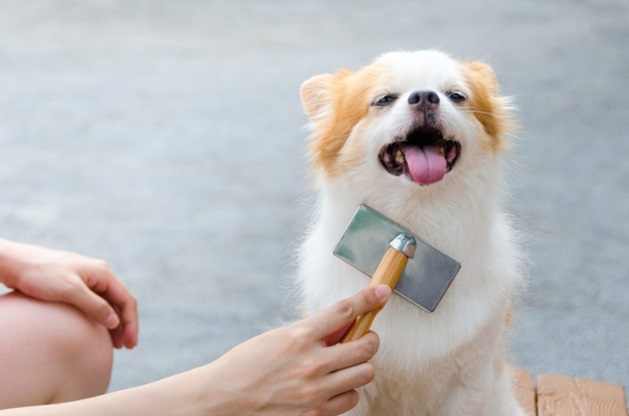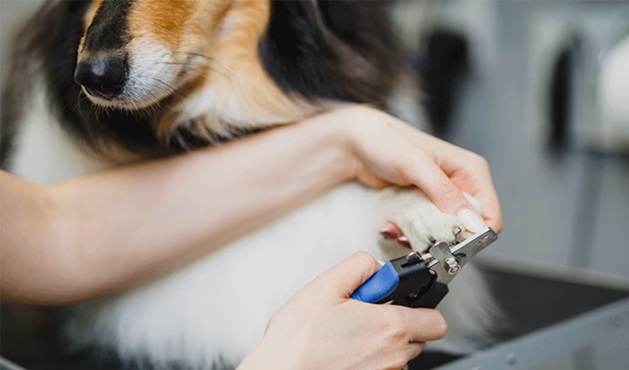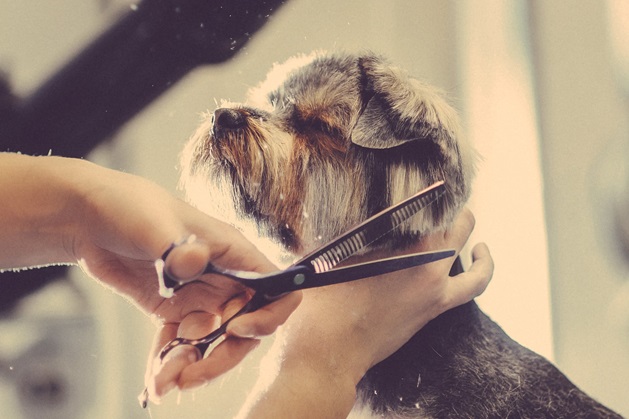Regular grooming keeps your dog looking and feeling great. Booking at professional groomers is always a good idea – they have the equipment, experience and knowledge to look after your pet. However, sometimes you may not have one available in your area or want to keep their coat in check between appointments. In this case, you can give your dog a basic grooming session at home with the right tools.
Pet Brushes

Brushing your dog every other day can keep their coat lustrous, prevent matting, reduce shedding, and remove dirt and debris. This is why a high-quality pet brush is essential. Pet grooming brushes come in various designs, shapes and sizes, so choosing the right one depends on your dog’s coat type and breed.
Are you a proud parent of a Doberman, Pug or maybe Dalmatian? Grooming gloves and soft bristle brushes are suitable for dogs with short, silky coats. Dogs with short hair typically require less upkeep when it comes to grooming but still need regular brushing to keep their coats healthy. For German Shepherds, Golden Retrievers, Belgian Tervurens and other dogs with medium-length coats, you can use slicker brushes or pin brushes.
The latter are often made of wood and feature wire pins with protective balls at the ends to prevent scratching the skin. For longer-hair breeds like Bernese Mountain Dogs and Bergamasco dogs, you can use slicker pet brush with firm, extra-long pins. This type is specially designed to penetrate and brush deep into the coat, without scraping or snagging. А professional-grade slicker brush should be reliable, durable, and comfortable to hold.
Next, you can find pet grooming brushes in a vast range of shapes. For instance, a triangle slicker brush is a great option for wool-coated dogs that frequently get knots under their arms. Because of its unique shape, this tool makes it easy to brush those hard-to-reach areas. For long-coated breeds, however, a long, angled pin slicker brush works wonders since the pins penetrate the coat deeply, removing tangles and detangling thoroughly.
Nail Clippers

Regular nail care is important for ensuring the overall well-being of your furry companion. Active, outdoor dogs may naturally wear their nails and require less frequent trimming. Playing and walking on hard surfaces like concrete or pavement can also cause nails to wear down. However, most dogs need their nails regularly clipped.
Failing to do so can cause nails to curl and grow into the paw pad and put stress on joints which can lead to problems like arthritis. Using dog nail clippers can help keep your pooch’s nails well-maintained. A great nail clipper should be sharp, durable, comfortable, and easy to use. In terms of style, you can choose between plier-style trimmers or guillotine-style clippers.
For larger dogs with longer nails, pliers or scissors-style clippers are a better fit. Because you can cut from multiple angles, they might be more comfortable and user-friendly. Guillotine-style clippers, on the other hand, aren’t as strong as plier-style trimmers, making them a poor choice for dogs with thick or large nails. They are more suitable for dogs with small or medium-sized nails. Instead of clipping, you can also grind your dog’s nails.
Dog nail grinders are small, fast-rotating tools that work well on thick nails and can give a smoother finish to the nail than clippers. One of the most common accidents that can happen during this process is cutting your dog’s nails too short which can lead to to pain and bleeding. To be better prepared, always have a styptic powder at home to stop the nail from bleeding if cut too short. A styptic powder is a safe, quick and effective aid to block pain.
Scissors

Scissors are another tool in your grooming arsenal. They’re great for touch-ups and trimming hair around your pet’s legs, ears, and face. The safest option for grooming your pooch without snagging or pulling are sharp, professional-grade scissors. There are various types of dog grooming scissors available on the market, each serving a specific purpose.
Straight scissors are used for general trimming and shaping around the face, paws, and body. Curved scissors are precise tools great for adding definition and creating rounded shapes around the body. Thinning scissors thin out thick coats and create a well-maintained coat. Safety-tip scissors are useful for doing delicate work around the eyes, ears, and groin. These tools are a great option for beginners and dogs who are anxious during grooming sessions.
Dogs have a keen sense of hearing and the sound of scissors can make them nervous. To make the experience more pleasant for both us and our furry companions, and minimise the risk of accidents, you want to use only the tips of the scissors to trim delicate areas. Also, ensure that your four-legged companion is comfortable and you don’t rush the process. Take your time while grooming, remain calm and offer treats to reinforce positive behaviour. This will help keep your pooch at ease throughout the entire grooming session.


